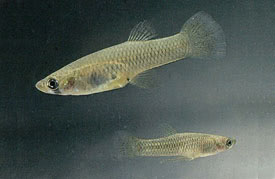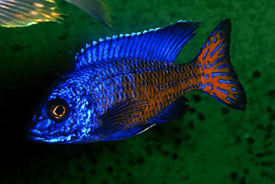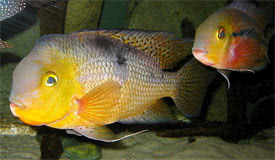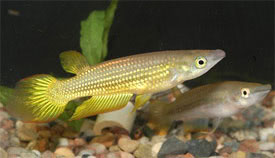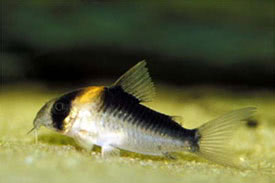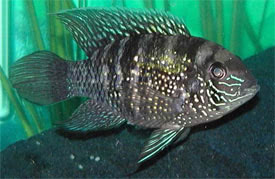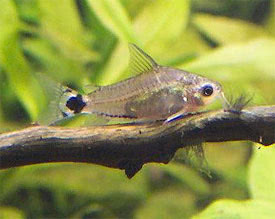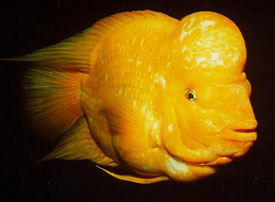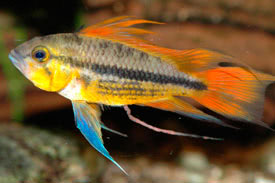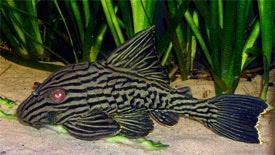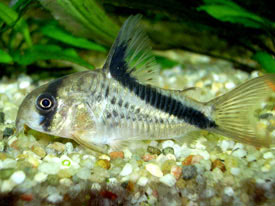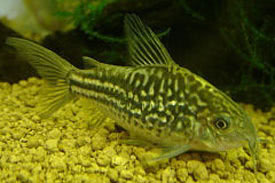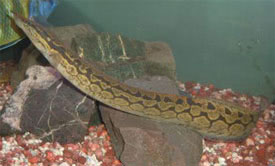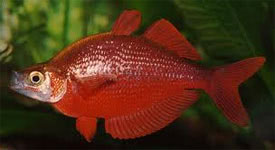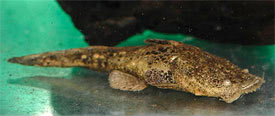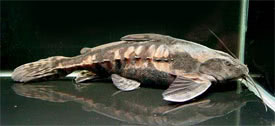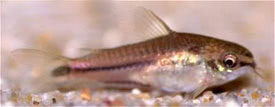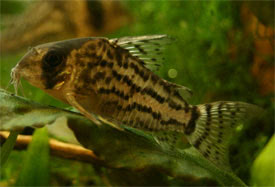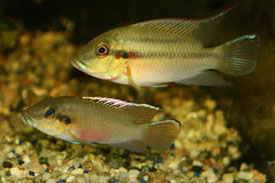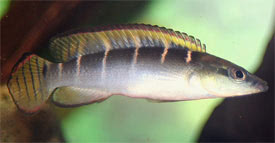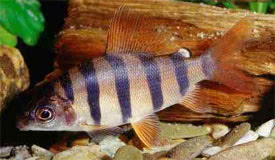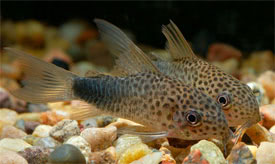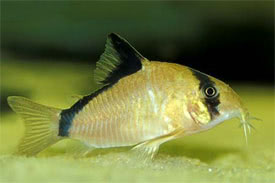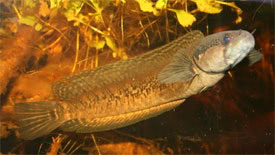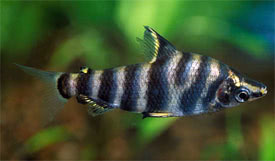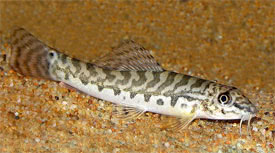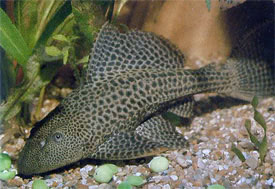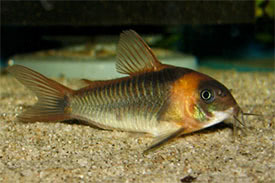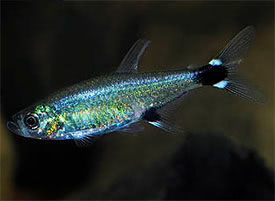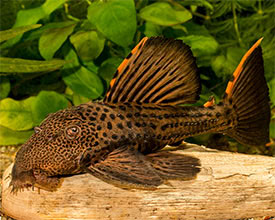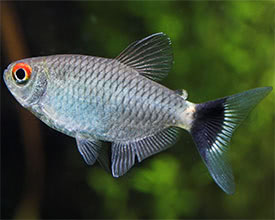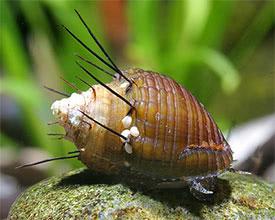
 Magyarul / Hungarian
Magyarul / Hungarian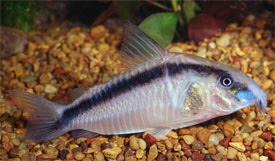



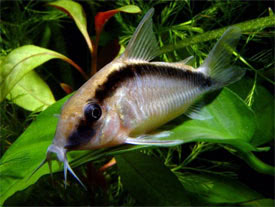
- Scientific name: Corydoras arcuatus
- Synonyms: -
- Common name: Skunk Cory, Arched Cory
- Group: Catfishes
- Habitat: South America; Colombia, Ecuador, Peru and Brazil
- Size: 4.5-5.5 cm
- Biotope: Native to the upper Amazon basin in small streams and floodplains.
- Social behavior: A peaceful, schooling fish, ideal for community tanks. Do not keep with substantially larger, aggressive fish such as large cichlids.
- Diet: Omnivorous; Live, aquatic insects, white worms, Tubifex, Artemia, bloodworm, tablets and flakes are also accepted.
- Breeding: Hard
- Tank: Minimum 60 litres
- Population: 6-7 fishes for 80 litres
- Decoration: They like to burrow, so use fine gravel or river sand as a substrate. Provide hiding places from roots or driftwood. A few dried leaves are essential to mimic their natural habitat. The water can be filtered through peat, and the lighting shouldn’t be too bright.
- Temperature: 22-26 °C
- pH: 6-8
- Hardness: 2-25 NK°
- Lifespan: 5 years
Description: Corydoras arcuatus has a yellowish beige body color with a gold sheen. A black arched stripe runs from the snout, through the eye, along the back to the caudal fin, whereof the fish gets its common names. When the fish stressed, the stripe may turn so pale it almost disappears. Arched Cory has a similar pattern to Corydoras narcissus, but the latter has more longer snout. The belly is pure white, and the fins are transparent. In recent years a much larger corydoras which has a body length of 7 cm with a same pattern has been imported, and sold as „super arcuatus”. This fish is possibly a different species and it’s currently referred to as Corydoras cf. arcuatus (they are usually imported from the Rio Purus river). Skunk Cories are more sensitive to bad water than other cories, so small regular water changes are very important. Females have a rounder body, and the males are a little smaller. All Corydoras catfish like to shoal, so keep them in groups of 5 or more fish.
Cories are best bred in groups in a separate 40 litres tank, and should have a ratio of 2-3 males to each female. The water should be peat filtered, soft and neutral (pH 7) with a temperature of 24 °C. Perform a large water change (50%) with RO water, or rainwater approximately 5 °C cooler than the tank water to initiate spawning. This may have to be repeated over several days before spawning is triggered. Many Corydoras species are spawning in the wet season in their natural habitat, at the same time of year as the European winter, so breeding them during summer time may fail. Courtship consists of the male touching the female with his snout and then the female will swim constantly around cleaning rocks or plant leaves in the tank, they will also become much more active. Corydoras adopt a T-shaped spawning position, where the male will grab the females pelvic fins and twist his body into hers and she will release her egg pouches at the same time as the male sperm. This is repeated several times with the female taking the egg pouches and placing them at various locations throughout the tank. After spawning the parents should be removed from the tank, as they will eat the eggs. The eggs will hatch in 3 to 4 days and the young can be fed with fine flake food or newly hatched brine shrimp (fresh or frozen). Maintaining water quality is the key to raising cory fry so ensure regular water changes take place.




